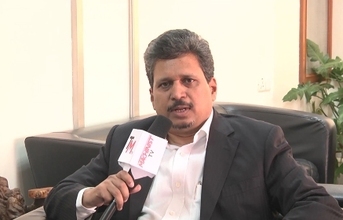
The figures till September 2015 show that the Indian machine tool industry has actually shown a decent growth despite the difficult market conditions. Where is this coming from? What is your projection for the current FY and the next year?
Till September 2015 for the one-year period before that we have seen 8-10 percent growth. Indian companies have focussed on niche and traditional areas such as automotive, railways and defence. New innovations, product development and engaging with customers resulted in growth happening in these segments.
By the end of March 2016, we can expect a 5-10 percent growth. However, in the next five years, I see a CAGR of 15 percent and by the end of year 2020, consumption will surpass Rs 20,000 crore from the current Rs 10,000 crore.
IMTMA had envisaged the industry to grow to Rs23,000 crore by 2020. Do you still see this happening? Where do you see the challenges?
The Challenges to overcome are Policy initiatives which are handled by the centre- be it GST or Land Reforms. It will be a national level impact on a variety of manufacturing segments. We will see investment flows particularly in manufacturing happening in a proposed manner.
The Machine Tool industry which IMTMA is a member off will primarily see demand happening from other manufacturing sectors resulting in companies entering with new investments.
There will be a connection seen between user segments and machine tool industries growth in a very close manner. That is what we are hoping to see happening in the years which will drive growth in Machine Tool Industry to a high level.
The key focus is innovation, technology and product development. Companies are investing in this including the Government of India and Research bodies and in the years to come, there would be good positive growth for the industry and the economy.
How is the Indian machine tool industry changing with regards to technology upgradation? Do you see the dependence on imports getting reduced at least marginally in the next 2-3 years?
We don't advocate 100 percent manufacturing technology from India which is not also strategically a good idea. We need newer technologies from other countries also.
A few years back our domestic production was less than one third and imports were two-third. Today, we have reached a stage where it is a 50 percent market share that we are enjoying with domestic production levels at 45 percent plus and imports at 55 percent. A few years from now and it would be reversed. The huge scope for imports would be big machines from countries like Japan or Germany not in terms of numbers but in terms of high end technology that only key players will continue to play a role in.
What is your assessment of the market scenario with regards to the Indian buyers of machine tools and cutting tools? They have definitely become more demanding and price sensitive but have they evolved in terms of factors like understanding of technology, value propositions and lifecycle cost?
This happens in every market. Of course, Indians are more demanding and expect better value and lesser prices. The key over here is that companies have to offer better customer engagement, product development and innovation thus meeting customer requirements and also improve business engagement. I do not see it as a conflict though it is a good sign. I am sure more Indian companies will be able to meet this requirement which will soon become the norm.
END
The author is a Chennai based freelancer.


























